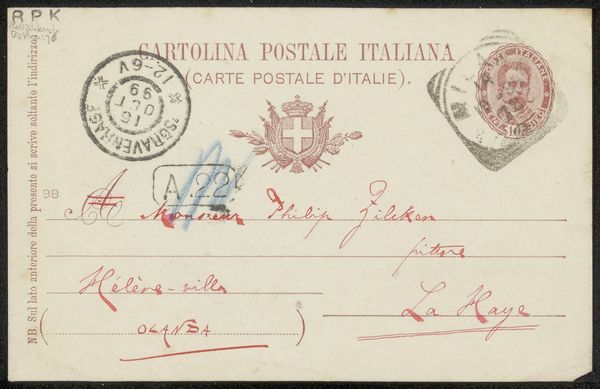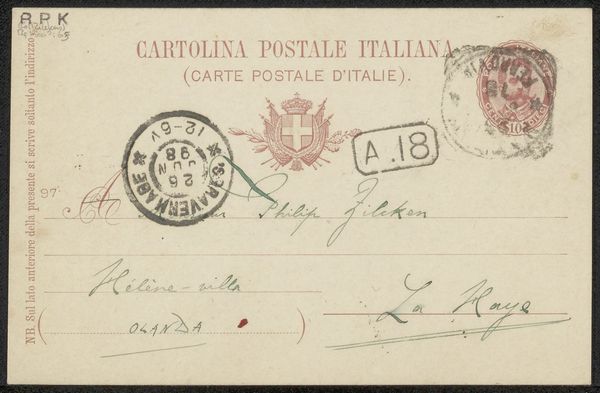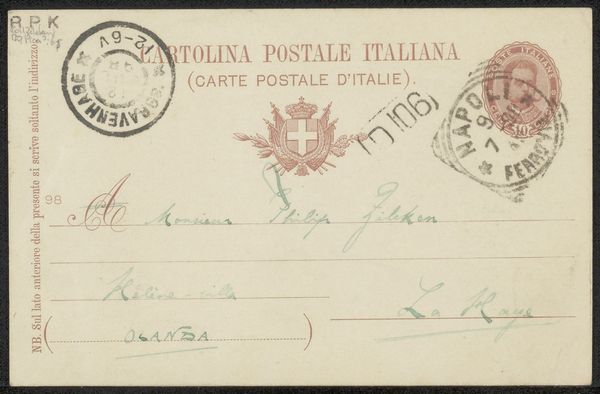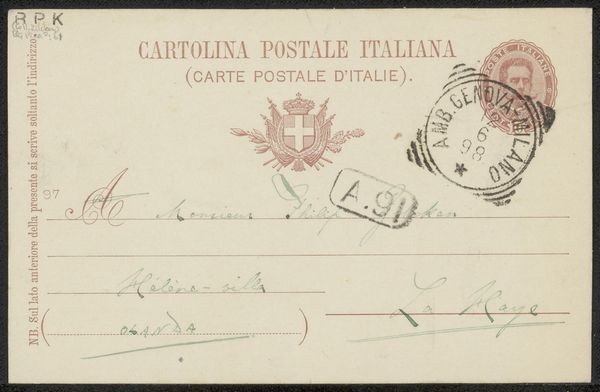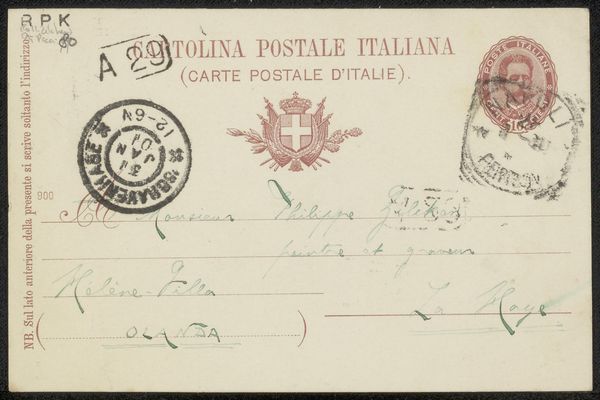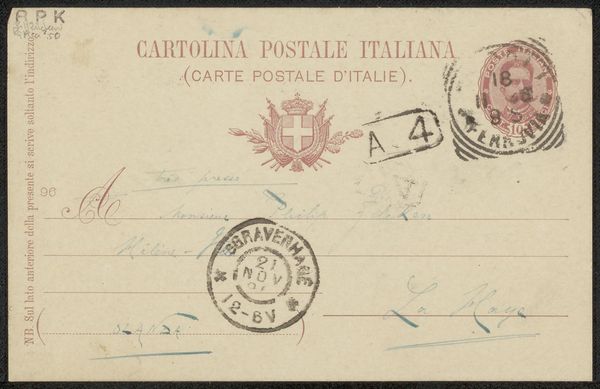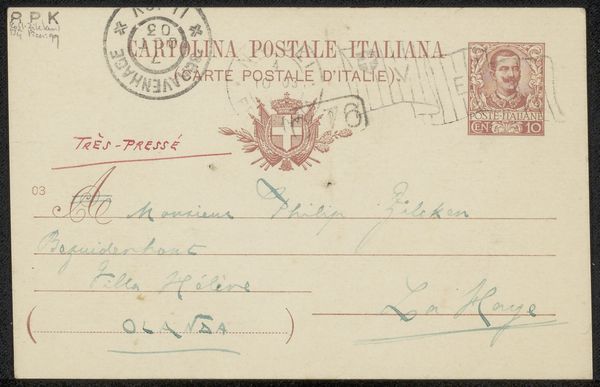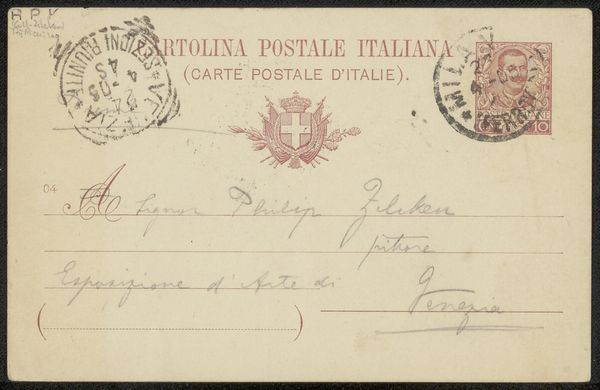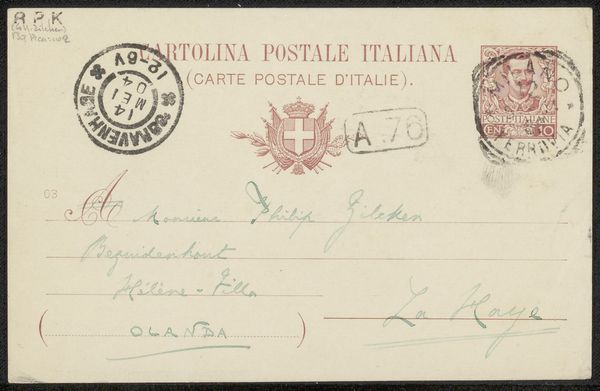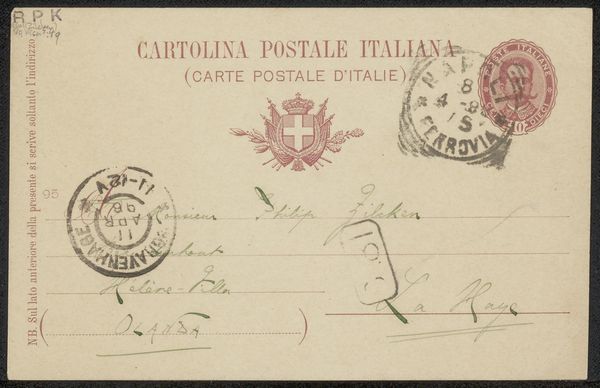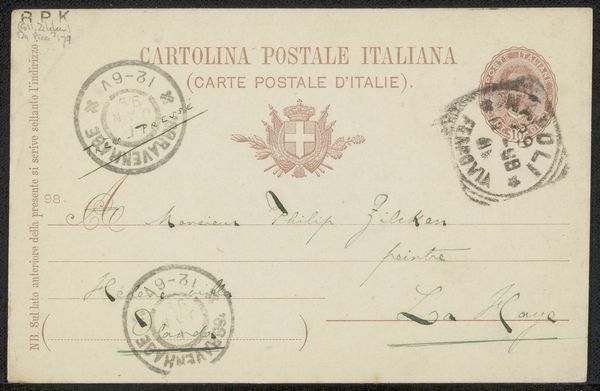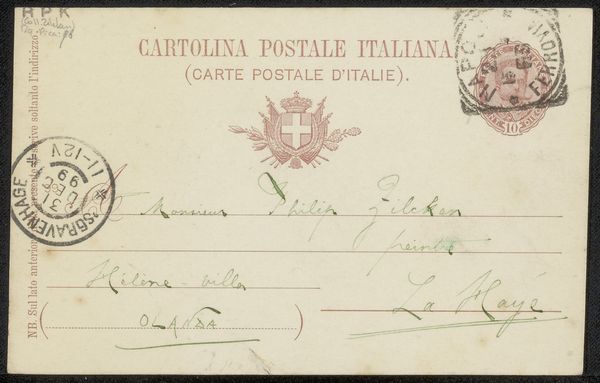
print, paper, ink
# print
#
paper
#
ink
#
islamic-art
Copyright: Rijks Museum: Open Domain
Editor: We're looking at a printed postcard, likely from 1895, titled "Briefkaart aan Philip Zilcken." It seems simple enough— a vintage Italian postcard. There are faded stamps and elegant script address labels, bearing marks of age. It looks so formal for something that is ostensibly a casual piece. What strikes you about it? Curator: Ah, postcards! Each one is like a little bottled message tossed across time, isn't it? This one, addressed to Philip Zilcken, is particularly intriguing because of its implied story. Imagine Zilcken receiving this. It could be something as prosaic as confirmation of travel plans. We don’t have a narrative element here. What would he feel holding a token from another’s adventure? What worlds were shared with ink across the page? It begs us to use our imagination and write our own interpretation. Does this resonate? Editor: Absolutely! It makes me think about our own ephemera. But what can you really read from the various stamps and markings? Are they simply functional or somehow expressive, too? Curator: Both, perhaps. Officially, the postal markings indicate the card's journey but visually they speak to bureaucracy and nationhood: emblems, and perhaps something darker relating to communication across lands. The handwriting as well offers an intimate view into character that a digital script can’t. A digital “letter” might exist forever; the ephemeral nature of the letter creates a powerful reminder of time’s relentless march forward. What are your reflections? Editor: I never thought about it like that! I’ll think differently about my own correspondence. Thanks so much. Curator: My pleasure. Now, let us decode some further hidden meaning…
Comments
No comments
Be the first to comment and join the conversation on the ultimate creative platform.
